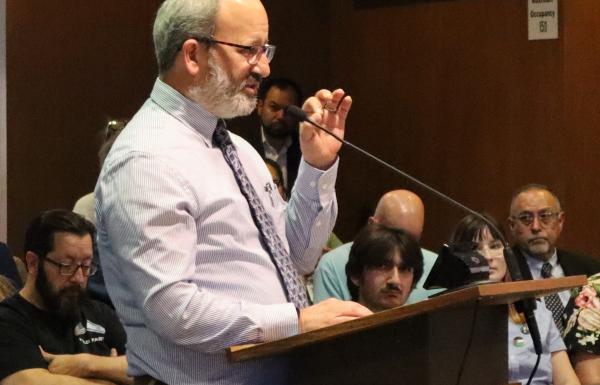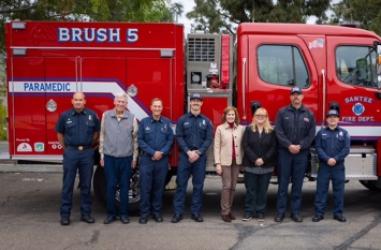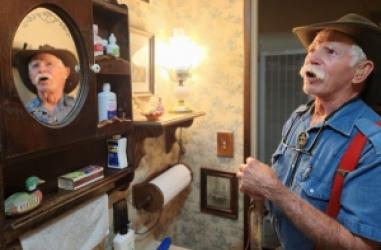Politics
Visit East County
Latest articles
OUR GUIDE TO COFFEE SHOPS IN SAN DIEGO'S INLAND REGION

Miriam Raftery, Branda Gorgies and Karen Pearlman
Whether you’re looking for a quick cup of coffee or a jumping java joint complete with live music, poetry readings and delicious dishes, San Diego’s inland region has an array coffee houses brimming with both character and freshly-brewed coffee choices.
Whether you're seeking espressos, mixed coffee beverages, cold brews, or just a good cup of freshly ground java, you'll find plenty of tempting choices, including many that also serve up foods ranging from pastries and snacks to full breakfasts, lunches, healthy options and more.
Here's our guide to the best places to find a great cup of coffee and other coffee-related options:
- Read more about OUR GUIDE TO COFFEE SHOPS IN SAN DIEGO'S INLAND REGION
- Log in or register to post comments
STAYING THE COURSE: OUR GUIDE TO GOLF IN SAN DIEGO’S INLAND REGION
There are plenty of greens to tee off from in San Diego County’s eastern areas

By Karen Pearlman
With more than two dozen golf courses scattered across the foothills and valleys of inland San Diego County, players of all skill levels will find affordable and diverse landscapes away from the coast for putting and driving amid scenic mountain, valley, and desert views.
From resort-style championship courses to local public links, the variety is as vast as the terrain with greens on hillsides, fairways framed by boulders or lined with mature oak and eucalyptus trees, tranquil ponds and waterscapes, as well as challenging elevation changes, the eastern portion of San Diego County provides a unique and diverse blend of golfing environments for swings of beginners and experts alike, as well as everyone in between.
OUR GUIDE TO WINERIES IN SAN DIEGO’S INLAND REGION

San Diego County has become a thriving wine region, home to well over 100 wineries. Unlike wine hubs in Napa or Temecula, our county’s wineries are mostly small, boutique and family-owned, offering visitors the opportunity to meet the winemakers and savor a range of experiences in scenic rural and mountain areas, as well as some urban wineries. Many are producing wines that are winning awards in regional and even international competitions.
You’ll find an array of red, white and rosé varietals from around the world, as well as sparkling wines, apertifs, dessert wines, and even mead, a honey-based wine, to suit your palate.
Some wineries also offer food, as well as other experiences ranging from live music to hayrides through the vineyards.
- Read more about OUR GUIDE TO WINERIES IN SAN DIEGO’S INLAND REGION
- Log in or register to post comments
OUR GUIDE TO ANNUAL FESTIVALS IN SAN DIEGO'S INLAND REGION

Each year, San Diego County’s inland communities host many special events and festivals that reflect our region’s colorful history, arts and music, cultural heritage, diversity, beautiful environment, and holiday celebrations.
Parades, outdoor concerts and movies, country fairs, classic car shows, powwows, rodeos, Oktoberfests, ethnic events, wine and food tastings, seasonal and holiday festivities are just some of the many annual events held in our inland region.
For current and complete calendar listings, visit http://www.eastcountymagazine.org/calendar . Also see our seasonal articles on major festivals and our Destination East County column listing top festivals and events.
Some of the major annual festive events in East County include the following. Actual dates vary from year to year, and new events are frequently added:
AMID REMAP PUSH, DEMOCRAT AMMAR CAMPA-NAJJAR FILES TO RUN AGAINST REP. ISSA

Photo: Ammar Campa-Najjar (left) and Darrell Issa. (Times of San Diego file photos)
August 24, 2025 (San Diego) - With his prospects enhanced by potential redistricting, Democrat Ammar Campa-Najjar on Friday filed papers for a rematch against Rep. Darrell Issa in the 48th Congressional District.
Wildfires
SANTEE GETS A NEW BRUSH FIRE ENGINE
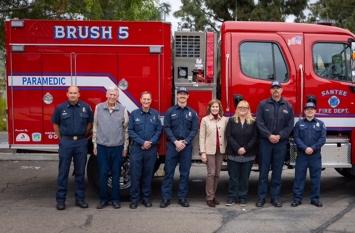
By Mike Allen
Photo: Members of Santee Fire Dept, SD Regional Fire Foundation and the SD River Conservancy with new brush rig funded through the city along with grants from the two nonprofits.
August 11, 2025 (Santee)-- The city of Santee has another key tool in its goal of protecting the city from wildfires, a new brush fire engine.
City officials and the public will get together Aug. 20 for a “push-in” ceremony at Station No. 5 to celebrate the new engine, which was paid mostly from nonprofit grants.
- Read more about SANTEE GETS A NEW BRUSH FIRE ENGINE
- Log in or register to post comments
Wildfire & Emergency Resources Center
East County Magazine gratefully acknowledges our sponsors for our Wildfire & Emergency Resource Center: San Diego Regional Fire Safe Council, San Diego River Conservancy, and the Conrad Prebys Foundation for helping us keep our community members safe and informed.
- Read more about Wildfire & Emergency Resources Center
- Log in or register to post comments
COULD OUR REGION RUN OUT OF WATER IN A MAJOR WILDFIRE, AS HAPPENED WHEN L.A. FIRE HYDRANTS RAN DRY? HELIX WATER SHARES INFORMATION WITH LA MESA’S CITY COUNCIL
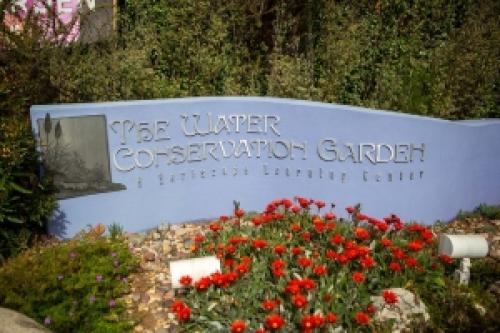
“It could happen, at any water system in the United States. The systems were not designed for what we what we witnessed in L.A.,” says Helix Water District general manager Brian Olney, though Helix has taken steps to reduce risk
By Karen Pearlman
March 20, 2025 (La Mesa) -- The city of La Mesa is being proactive on educating residents on emergency situations for water needs in case of out-of-control wildfires such as the January blazes that devastated Los Angeles County. Concerns about fires and lack of water to fight them led to elected officials in the city of La Mesa to have Helix Water District share insight and information about protection in a presentation at the March 11 City Council meeting.
DON'T RELY ON LUCK: SURVIVE AND RECOVER IN A DISASTER
By Yvette Urrea Moe, County of San Diego Communications Office
Video by José Eli Villanueva: prepare for a disaster with an emergency supplies kit, or “go bag.” When disaster strikes, often there are only a few minutes warning to evacuate. So, don’t wait until the warning comes, when you will likely be anxious and stressed, assemble your kit today and put it in a handy place to grab on your way out.
- Read more about DON'T RELY ON LUCK: SURVIVE AND RECOVER IN A DISASTER
- Log in or register to post comments
SANTEE COUNCIL MAKES FIRE PROTECTION ITS TOP PRIORITY
By Mike Allen
Photo by Scott Lagace: Santee firefighters saved the life of an unconscious woman during a July 2024 fire that engulfed her mobile home, also administering oxygen to save a cat.
- Read more about SANTEE COUNCIL MAKES FIRE PROTECTION ITS TOP PRIORITY
- Log in or register to post comments














